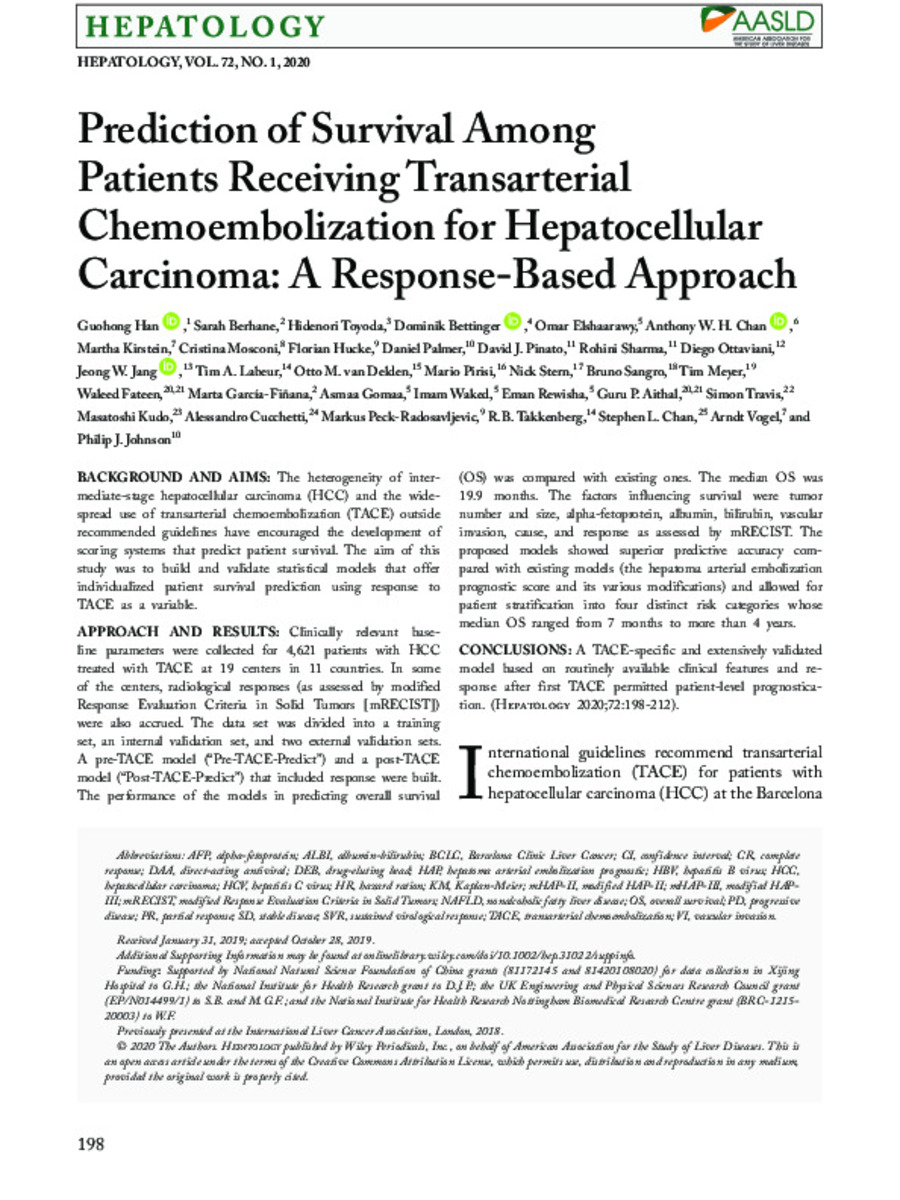Prediction of survival among patients receiving transarterial chemoembolization for hepatocellular carcinoma: A response-based approach
Palabras clave :
Hepatocellular carcinoma (HCC)
Transarterial chemoembolization (TACE)
Scoring systems
Patient survival
Fecha de publicación :
2020
Editorial :
American Association for the Study of Liver Diseases
Nota:
This is
an open access article under the terms of the Creative Commons Attribution License, which permits use, distribution and reproduction in any medium,
provided the original work is properly cited.
Cita:
Han, G. (Guohong); Berhane, S. (Sarah); Toyoda, H. (Hidenori); et al. "Prediction of survival among patients receiving transarterial chemoembolization for hepatocellular carcinoma: A response-based approach". Hepatology. 72 (1), 2020, 198 - 212
Aparece en las colecciones:
Estadísticas e impacto
0 citas en

0 citas en

Los ítems de Dadun están protegidos por copyright, con todos los derechos reservados, a menos que se indique lo contrario.







